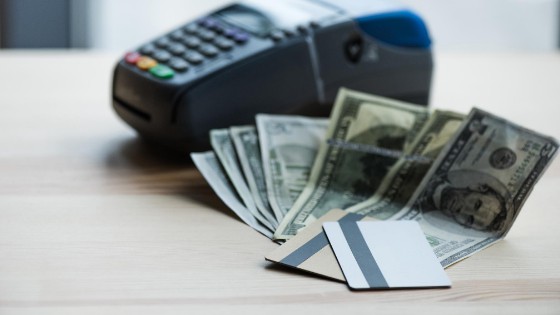
Almost everyone has a credit card these days. While some users are straddled with massive debts, others have smooth sailing at optimal convenience. How, you ask? It all lies in what kind of credit card you apply for. Low-interest credit cards offer many people financial freedom at the best rates out there, and we think it is high time you knew about them.
What is a Low-Interest Credit Card?
It is also known as a low APR credit card. APR is an abbreviation for Annual Percentage Rate, used for comparing credit cards and loans by considering the interest rates you have to pay and any fees or additional charges. It is a card that offers low rates on purchases, balance transfers, or both for as long as you have the card. Credit cards typically charge an APPR of at least 20%, but the best low-interest offers go for as little as 5%. It is a cheap avenue to borrow or transfer funds when you need to. Although some low-interest cards have fluctuating rates, most of them have a fixed fee for the card’s life length. You can rest assured that you will pay lower rates than regular credit card owners. You can also avoid switching to new credit cards every few months just to enjoy the optimal introduction deals. Some of them even offer interest-free periods of up to three months before reverting to low-interest rates.
Why Use a Low-Interest Credit Card?
A low-interest credit card gives you a low rate for the rest of your lie. You get a consistent cheap deal and avoid the pressure that comes with paying your balance off in a specific period.
It is easier for you to budget on your funds without applying for numerous cards so you can use the 0% promotional deals. These cards that offer 0% interest rates on balance transfers and purchases seem very tempting, but there is a catch. Be sure to pay off the full amount you have spent before the promotion period ends. Failure to do this will automatically accrue an interest rate of at least 23% APR on your credit card. A low-interest rate credit card offers you certainty with standard rates on all your credit card needs.
Advantages & Disadvantages of Low-Interest Credit Cards
Advantages
- There are no annual fees on low-interest cards because the rate provided usually goes for the card’s entire life. You need not worry about the cost of your balance rising afterward.
- Since you get a permanent rate for your card, it is much easier to budget because there are no surprise charges. You can stick to one card and monitor your spending.
- Low-interest cards do not set ultimatums for you to pay off your debt, so you are free to choose a payment plan that works for you.
Disadvantages
- if you are looking for a card to make a costly purchase or transfer a balance, a 0% rate credit card might be a better deal for you. This strategy only serves as an advantage if you can repay the debt before the promotion period ends. If not, you will be saddled with the high-interest rates you were trying to avoid.
- Some low-interest credit cards have low rates on one product and different rates on everything else. Your card may offer a low-interest rate for purchases but charge higher for cash withdrawals and balance transfers.
- Many low-interest credit cards allow free balance transfers but some charge up to 5% of the amount you are transferring. Being ignorant of these facts can significantly affect your debt and credit score. The interest on cash withdrawals from your card is charged from the date you withdrew. That is the rule irrespective of whether you have paid off your balance for that month or not.
- Some fees accrue if you are late in making your monthly payment or if you miss paying altogether. Your credit card rating will deteriorate, and if the missed payments persist, your lender may take legal action against you.
- The minimum monthly payments you have to make are set low, and as such, it will take you longer to clear your debt. You may want to consider paying more than your minimum amount so you can finish paying off your debt faster.
- Your credit limit will most probably range between a few hundred and a few thousand bucks. This limit may not be sufficient for your needs. However, suppose you go over your limit. In that case, fees will be charged on your balance, which is bound to affect your credit rating negatively.

What To Consider Before Applying For a Low-Interest Card
Your credit score is an excellent determinant of whether your credit card application goes through or not. You can quickly check and fix your credit score online so you can take steps towards improving it. These steps include:
- Making sure that you are registered on the electoral roll.
- Correcting any mistakes on your credit report.
- Waiting at least six months between credit card applications.
- Paying all your bills entirely and on time.
How to Choose the Right Low-Interest Card For You
Before choosing the right credit card provider, you need to consider what you plan on using that card for. Credit cards are comprised of the following transactions:
- Purchases
- Balance transfers from another card
- Money transfers to a current account
- Cash withdrawals
While some low-interest credit cards have a uniform rate for all credit card transactions, others have varying charges. Choose a card that offers the cheapest deals for what you need.
Credit card providers are obliged by the law to provide their advertised rates to at least 51% of their applicants. That leaves a lot of room for discretion on their part. As such, applying for a card and getting accepted doesn’t always mean that you’ll get the rates that enticed you to apply in the first place.
Although that might be the case, your credit profile and overall score play a significant role in what sort of deal your lender offers you.

A good credit score is typically one ranging from 600 and above. Finding yourself with a low credit score may be a bit of a pickle, especially if you need to apply for credit. We have put together this detailed read to answer all your credit score related queries and help you fix low score.
How Are Credit Scores Calculated?
Most people have more than one credit score. Credit scores depend on several factors, including the credit card company giving the score, the data used to arrive at that score, and the method used to calculate it.
The form of credit scores used by credit card lenders varies based on the kind of business they practice. Some creditors will choose a credit score that reflects one’s payment history in that particular industry.
The following aspects are considered when calculating your credit score. The kind of information emphasized in each credit score depends on the credit bureau’s type of scoring.
Factors Considered When Calculating Credit Scores
- The total number of accounts a credit cardholder has
Calculations to determine credit scores consider the number of credit accounts a customer has opened in the recent past. New ones affect your credit history and, consequently, your credit rating.
- The types of credit card accounts in question
Credit bureaus also consider the various types of credit accounts you may have and how many you have in each category. These include credit cards, mortgages, student loans, personal loans, and other similar financial products. If you can manage your credit correctly without neglecting either, lenders will look upon you more favorably. Read more about the most common Citi Credit Cards.
- A comparison between the amount of credit used and available credit
Creditors always take a keen interest in the amount of credit you have used and those you still have available. Looking at this information can help them determine if you are a responsible spender or one who seeks to max out their card first they get. If you use and pay off credit sensibly and on time, credit lenders will have no problem extending you more credit. Credit cardholders who have maxed out most of their cards or reached their credit limit are not likely to get more credit.
- How long a customer has used credit services
A customer’s credit history directly portrays how long all their credit accounts have been active. While new accounts may make it harder for lenders to assess your creditworthiness, older ones give them an insight into your credit behavior, positive or otherwise.
- A credit cardholders payment history
Lenders and creditors like to ascertain that customers can pay back the credit offered on time before they choose to commit. Your payment history helps a creditor decide whether to offer you credit or not. How have you paid your credit in the past? To accurately analyze your payment history, lenders have to look at your mortgage loans, credit cards, department store credit accounts, student loans, home equity loans, and more. If you have taken out a financial product in your lifetime like online money borrowing, the chances are that the level of commitment and punctuality you applied when paying it off will be considered as well.
This history also shows a lender relevant information concerning any late debt payments, missed payments, and situations like collection, foreclosure, and bankruptcy. Some credit card users make payments diligently and on time with some cards while neglecting others. Your payment history will compare those cards you have paid off and the ones you have defaulted on to determine your credit scores.

Essential Tips to Increase Your Credit Score
- Register on the electoral roll – If your name is not on the electoral roll, you’ll find it much harder to get credit. You can register online from the comfort of your home.
- Correct any mistakes on your file – The slightest bit of false information can come between you and a good credit score. It doesn’t matter if it just a misplaced letter in your name or a wrong current address. Ensure all your details are correct and report any wrong information as soon as you realize it so measures can be taken to rectify the issue.
- Pay your bills on time – be sure to pay all your home and office bills on time. That is a great way to show creditors that you are a responsible and reliable customer. Strive to make these payments punctually, or else you’ll seem like a customer who does not have their finances in order.
- Check if you are linked to someone else – Joint accounts with family and friends may not be such a good idea after all. If they have a low credit rating, it will automatically affect yours since the joint account links your financial information as far as that particular account is concerned.
- Check for fraudulent activity – It is essential to check all your financial information for any issues regularly. If someone has fraudulently applied for credit in your name, how they manage that credit will be featured in your credit scores and reports unless you report such activity.
- Court Judgments – Woe unto you if you have received court judgments or orders regarding debts. These are mostly issued when one defaults in paying credit and the respective lender have sought legal action against you. Such activity connected to your credit account will affect your credit score negatively. You can avoid this by making all monthly payments without fail and refraining from taking overdrafts or exceeding credit card limits.
- Large existing debts – A good credit customer pays off any outstanding debts for considering new ones. If you have much debt, creditors interpret that to mean a lack of commitment to pay and irresponsible financial habits. To avoid accumulated and multiple debts, borrow only when you have to and pay before applying for more credit. Some people even borrow more credit to pay off old ones. That may seem like a good idea until you find yourself stuck in a vicious cycle of unending debt.
- Moving homes frequently – Creditors are bound to feel safer extending you a line of credit if you have a permanent address. Moving every few months or years will make you appear unreliable ad unpredictable.
- Maintain low credit utilization – Credit utilization is measured by reviewing how much credit you have been offered and the amount you have already spent. If you have used most or even all of your available credit on all your credit accounts, lenders get the picture that you are an irresponsible spender who cannot be relied upon to pay back the credit. You can remedy this by paying an amount higher than your fixed monthly payments each month. That will help you pay off your debt faster and put you in lenders’ good books. It is also essential that you only use credit for emergencies or unavoidable circumstances. This way, you will only use a small percentage of your available credit, reducing your debt, and simultaneously improving your credit score.
This is a guest post from our fellow blogger at Tien Day Vi.

Citi Prestige credit cards have been very competitive luxury travel cards over the years. However, the company recently relaunched most of its products, including the Citi Prestige credit card, and people are having mixed opinions about it. Here is a comprehensive breakdown of all the facts that matter to form an educated opinion on the brand.
Introduction
The card offers a bonus of 50,000 points to all new users who spend at least $4,000 in their first three months after getting the card. The points are redeemable for a significant amount of benefits. Still, one might say that this is a well-orchestrated plan to entice new users into using a large percentage of their credit as soon as possible. What do you think?
Annual Travel Bonus
The Citi Prestige card offers a $250 credit, and all users are eligible as long as they are making travel purchases. Like every other credit card worth its salt, Citi Prestige also provides its cardholders with Priority Pass membership. The Citi Prestige Priority Pass has over 100 airport lounges that will be accessible to you as their customer. You get to enjoy $100 credit once in five years that goes towards your Global Entry, and TSA Precheck needs. Every cardholder is also eligible for a free 4th night on any hotel two times a year, courtesy of Citi Prestige.
Reward Rates
You get to enjoy five points on the dollar on air travel and restaurants, three points on the dollar on cruise companies and hotels, and one point on the dollar on any other purchases paid with your Citi Prestige credit card. These rates could be higher, but they are pretty good compared to similar credit cards. Another great option in this category is Chase Freedom and Fortiva Credit Card. Click the link to read the details review from our fellow financial bloggers at Credit Optimal.
Annual Fees and APR
The Citi Prestige credit card charges annual fees of $495. That may very well be the highest figure we have seen on a credit card’s annual fees. The perks and bonuses that the card offers can justify this amount, but it is essential to remember this when you are making credit card applications. If you are not endowed with deep pockets, you might do yourself some service by steering clear of this credit card.
Cardholders can add authorized users to their cards at a fee of $75. your authorized users will enjoy some of the perks that come with owning a credit card from Citi Prestige as well.
The APR, on the other hand, isn’t too bad compared to its counterparts. Users enjoy rates of between 16% and 25%, depending on your credit score and other factors determined by the company. It might not be too hard to make timely payments on the APR without breaking the bank, but we do not know about that annual fee.
Benefits of the Citi Prestige Card
- Reward points do not expire.
- Citi Prestige offers cell phone protection for theft or damage at no extra cost. You will be refunded for the entire cost of repair or replacement of your phone. That is not all; you have access to $1500 worth of cell phone protection yearly for up to five phones. Isn’t this a good deal?
- There are no blackout days.
- If you purchase damaged goods using your Citi credit card or the goods you’ve bought stolen in the first 90 days from purchase, the card covers you for a maximum of $10,000 per item and up to $50,000 per year.
- You can accumulate any number of points on your card, depending on your purchases.
- Users can get approved for one card after every eight days and a maximum of two cards every 65 days.
- Citi Prestige cardholders enjoy complimentary elite status with some of the top rental programs, including Hertz and Sixt. This perk comes with a complimentary World Elite MasterCard Car Rental membership.
- There are numerous ways to redeem your points, like merchandise, gift cards, and travel cash.
- You get a bonus value for redeeming your points for travel rewards through the Citi online portal.
- Citi Prestige offers additional warranty protection for all purchases made using the card. The lender offers an extension of the manufacturer’s warranty by an additional two years as long as the first warranty does not exceed five years.
- Cardholders can consolidate points with other cards to enjoy better reward rates and bonuses.
- Users are free to transfer reward points to a maximum of 13 travel partners. These transfers are at a rate of one point for one dollar.
Disadvantages
- Besides gift cards and travel purchases, the card offers low-value rewards.
- You have to book all your travels through the Citi ThankYou portal to enjoy reward points.
- There aren’t many Citi travel partners, especially when it comes to foreign airlines.
- Ridiculously high annual fees.
- Unlike other credit card lenders, Citi Prestige does not provide a waiver for the first year’s annual fees.

Is Citi Prestige the Right Card For You?
The Citi Prestige credit card might be the perfect card for you if:
- You use more than $400 or more every month on flights, restaurants, and travel agencies. You have to be a frequent traveler to make the most out of this card.
- You have a separate mobile phone insurance cover.
- You would like access to airport lounges.
- You are looking to make an application for Global Entry or TSA PreCheck.
- Regularly stay at hotels and pay for more than four nights.
The Citi Prestige might not be the card for you if:
- Do not travel every few weeks.
- Rarely use air transport to your preferred destinations.
- Have a low credit score. You can seek professional advice on how to raise your credit rating so you can qualify for the Citi Prestige credit card.
- Do not make scheduled payments to your credit card bill punctually each month or if you miss payments.
Final Thoughts
A lot of serious thought needs to go into choosing a credit card provider. Failure to make an informed and well-considered decision may result in you being stuck with debt you cannot afford and further worsening your financial woes. The Citi Prestige credit card offers a vast range of benefits for constant travelers, but it might not match your financial situation.
Carefully analyze the above features. We have laid all the cards on the table as they are; use them wisely.

Finding the right credit card provider can unlock a chain of benefits, rewards, and offers to help you manage your finances better and avoid the hassle that comes with taking out personal or payday loans. Chase Freedom Unlimited credit cards are very competitive in today’s credit market. Take a look at this detailed breakdown of their perks and features to decide if it’s the credit card for you.
Overview
Chase Freedom Unlimited is a credit card that offers cash back credit and immense value to its users. If you have a Chase Freedom Unlimited card, you earn 5% cash back on up to $12,000 spent on purchases from grocery stores in your first year of use. These cashback offers apply to every other grocery store save for Walmart and Target. It also offers a cashback of 5% on all travel using Chase Ultimate Rewards. That’s not all. Drugstore shopping and dining accrue a 3% cashback while overall purchases with the card receive a 1.5% cashback.
The card lets you enjoy an APR of 0% on purchases for the first 15 months. At the end of the introduction period, you get an APR of between 15% and 25%. Chase Freedom Unlimited does not have any annual fees. The perks of this card are seemingly endless, with a $200 reward once you spend $500 by making purchases in your first three months after acquiring the card.
That notwithstanding, your credit score mainly determines the APR that Chase Freedom Unlimited will offer you. If you are late in making monthly payments and paying your bills, you may find yourself paying a higher APR than you anticipated. These are the great benefits of Credit Cards compare to Debit Cards.
Advantages
- Purchases enjoy a 0% APR.
- No annual fees.
- Chase Freedom Unlimited offers an excellent introduction bonus.
- The card offers numerous cashback offers on most everyday purchases.
- There is no minimum restitution amount on the card.
- Users enjoy an unlimited cashback of at least 1.5% on all purchases done with the card.
- All rewards accumulated by your account do not have an expiry date.
- You can redeem any amount at any time as long as you have the required points.
Disadvantages
- Its APR is relatively high compared to regular credit cards.
- It assesses a fee for credit card balance transfers.
- The card abandons additional rewards on grocery purchases after the first year.
- There is a 3% fee on all foreign transactions.
- The fees that apply to cash advances are pretty high. The card charges 5% or 10%, whatever is more significant.
- Balance transfers also have fees of 5% or $5, whatever is higher.
- The 0% APR does not apply to balance transfers.
Additional Benefits
The Chase Freedom Unlimited comes with various benefits perks that make it a convenient and valuable option for customers who travel a lot. Here are some of the credit card’s additional benefits.
- Car rental insurance – You enjoy secondary coverage for collision, damage, and theft if you book and pay for rental cars with your Chase Freedom Unlimited card.
- Purchase protection – Chase Freedom Unlimited offers a reimbursement of up to $500 for claims of theft or damage related to goods purchased with your card. This sort of protection only applies during the first 120 days after purchase. The maximum amount you can get as a refund for any of these circumstances is $50,000 for one account.
- Extended warranty – When you purchase goods with warranties from the manufacturer, Chase Freedom Unlimited offers an additional year of warranty coverage. This perk is not enjoyed on all purchases, so yours has to qualify first. The extended warranty only applies to goods whose warranty period does not exceed three years.
- Trip cancellation and interruption insurance – If a user is forced to cancel a trip or cut it short because of a covered scenario. They are reimbursed for all non-refundable fares that are charged to your credit card. Such scenarios include illness and severe weather conditions.
- Chase offers roadside assistance to all eligible cardholders.
- Users can easily keep up with their credit score because of the lender’s weekly credit score updates.
- Chase credit cardholders enjoy a free three-month membership to DashPass, after which one is free to buy a plan or opt-out at their convenience.
A Chase Freedom Unlimited card offers endless perks and benefits for its users, mainly if you use your card to make expensive and essential purchases.

Redeeming Rewards
Users can redeem their credit card rewards on Chase Freedom Unlimited for the following:
- Direct deposits and statement credit at 1 cent per point
- Gift cards for 1 cent per point
- 1 cent per point on all travels booked through Chase
- 0.8 cents for every point on Amazon purchases
- Make purchases using the Pay With Points offer at Purchases 0.8 cents for every point
Pair your Chase Freedom Unlimited card with a Chase premium card of your choice and enjoy even greater rewards, bonuses, and offers to redeem them. Premium cards allow you to consolidate all your rewards and redeem for higher cents per point offers. Incorporating a premium card with your Chase Freedom Unlimited card widens your points’ value. It even allows you to enjoy services that aren’t offered by the Chase Freedom Unlimited Card on its own. These include the ability to transfer your rewards to any hotels and airlines that have partnered with Chase.
How To Get Approved By Chase Freedom Unlimited
Your credit score has to be nearly perfect for you to get a Chase Freedom Unlimited credit card. It is essential that you check your credit score and overall eligibility before applying. The numerous benefits offered by this card are worth the wait, so you can choose to strategically improve your credit rating and then apply when you have satisfied all their requirements. If your credit score is below 670, the chances of your application going through are very slim.
Chase Freedom Unlimited is also very strict, especially regarding the number of credit card accounts you can open. This lender checks how many accounts you have opened in the past two years preceding your application. If you have opened more than five accounts with another credit card provider during that period, Chase will likely decline your application.

The credit card and debit card battle has been mistaken to be superior to the other. Both cards are essential in our daily lives, and each one has features that make it preferable to a particular group of people. These cards are very similar physically, and one can even be mistaken for the other, but their composition and functions set them apart.
Debit cards permit owners of bank accounts to use money by extracting that which they have already deposited at that bank. A credit card provides a borrowing service for consumers from a credit card provider. The debt offered has a limit, and one can use it to purchase goods or services and make cash withdrawals. Both credit and debit cards offer convenience and financial safety that would otherwise be very hard to achieve.
Here is a detailed dissection of both cards to give you an insight into how each of them works and help you make an informed decision that complements all your financial needs.
Credit Cards
A financial establishment or lender gives a credit card to enable the customer to borrow money from the provider. When your application is approved, you acknowledge to pay back the money, with low-interest, as per the lender’s terms and conditions. To calculate banking interest rate, you can read full details here.
There are four categories used to classify credit cards:
- Standard – These credit cards offer credit to their customers.
- Reward – These cards provide cashback deals, store discounts, travel points, or other bonuses to their customers.
- Secured – You have to pay a cash deposit before receiving any credit. The lender retains that money as collateral for your debt.
- Charge – These cards do not have a predetermined spending limit. However, they are very strict when it comes to enforcing that no unpaid balances carry forward to future months.
Credit card owners who use reward cards can enjoy numerous perks that are inaccessible to those with debit cards. If you pay off your card utterly and before deadlines every month, you can gain predominantly by sorting out portions of your monthly shopping and house bills.
How you use your credit card is usually monitored and reproduced on a credit report. It allows responsible credit card users to improve their credit scores with well-thought purchases and punctual payments. Some credit cards also offer their customers extra warranties and insurance for purchased goods whether they offer the same perks. You may find that a defective item that you purchased using a credit card may still be covered by a warranty at your credit card provider even after the manufacturer’s warranty has expired.
Credit cards offer considerably greater protection compared to debit cards. If you promptly report theft or loss of your credit card, your maximum liability for any purchases made using your card after its disappearance cannot go beyond $50. Debit cardholders enjoy similar protection as long as one reports the loss or robbery incident before 48 hours are over. After that, the credit card users’ liability goes up to $500, and if 60 days pass, there is no limit to the amount of money the cardholder may be liable for.
Credit cardholders can dispute illegal purchases, loss of goods during shipping, or purchase damaged goods through the Fair Credit Billing Act. That gives credit card users a sense of security, mainly because mishaps related to shopping online are rampant. Debit cardholders can only dispute such incidents if the seller is willing to let them. That not all; debit card owners who have lost their cards can only get a refund after investigations into the matter have been completed. Credit cardholders enjoy more leniency compared to their debit card counterparts. Customers who own credit cards are not held liable for the disputed charges up and until they withdraw the dispute or the matter is settled in favor of the seller.
Renting a car is not any more comfortable for debit card customers. Most car rental companies prefer that all customers provide their credit card details as a provisionary against collisions or any sort of damage. Some even go ahead to ask that they be allowed to hold a certain amount of money on a debit card to act as a guarantee deposit. One cannot blame them. If you run a business, you want to be assured that you will be compensated or indemnified in an accident. Credit card companies offer insurance against collisions, so rental agencies are not as reluctant to let their cars go where credit cards are involved.

Debit Cards
A debit card allows you to make payments by subtracting money directly from your checking account. Major debit card processors like Visa and MasterCard strive to offer similar convenience to credit cards and just as many consumer protection measures.
Debit cards come in three categories:
- Average debit cards draw money from your bank account.
- Federal institutions issue electronic Benefits Transfer (EBT) cards to enable specific users to use their benefits for making purchases. Not everyone can own an EBT card.
- Prepaid debit cards offer those who do not have bank accounts a strategy for making electronic purchases limited by the amount of money they loaded onto the card.
Most economical customers prefer debit cards to credit cards because little to no fees are charged unless one spends more than what they have deposited into their bank account. If this happens, they incur what we call an overdraft fee.
Final Thoughts
Debit cards are ideally better for day to day use. Credit cards can quickly sink you into debt and such, should be saved for emergencies and purchases that are necessary. Very tempting to use credit and debit cards haphazardly, but it is essential to remember that you are spending your own money, one way or the other.
Proper financial planning, budgeting, and discipline are crucial if you want to use a credit card or debit card responsibly. Failure to take this into account will see you losing control of your finances, going broke, and getting deeper into debt. Consider the comprehensive breakdown above to help you choose the most suitable option for you.

